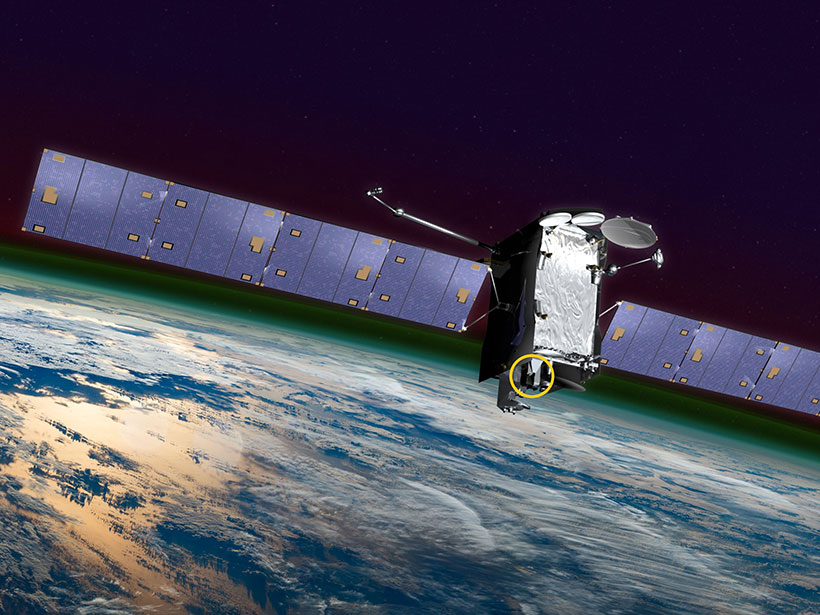Source: Journal of Geophysical Research: Space Physics
One of NASA’s newest missions, called Global-scale Observations of the Limb and Disk (GOLD), is revealing how the upper fringes of Earth’s atmosphere affect space weather by observing atmospheric airglow in unprecedented detail. In a new study, Eastes et al. report early data from the mission, including observations of how neutral gases in the thermosphere interact with charged particles in Earth’s ionosphere and how these interactions respond to disturbances in Earth’s magnetic field caused by solar storms hazardous to critical infrastructure.
GOLD was launched into geostationary orbit in 2018 aboard a communications satellite and began making routine observations in October of that year. The instrument measures wavelengths of ultraviolet light emitted by excited atoms and molecules at altitudes of 100 kilometers or higher when they relax to lower energy levels. These emissions phenomena include aurora as well as much fainter yet steady airglow across the night sky.
From its vantage over the western Atlantic, GOLD observes airglow across the full disk of Earth every 30 minutes, as well as in the thin ribbon of atmosphere, called the limb, surrounding it. Occasionally, when a star passes behind Earth, the instrument takes advantage of the starlight passing through the atmosphere to measure the density of oxygen in the air at different altitudes based on the light it absorbs. GOLD also collects valuable temperature readings and observations of the ratio of oxygen to molecular nitrogen, as well as of how these characteristics change during geomagnetic storms.
Early observations of Earth’s nightside from the mission have yielded surprising discoveries about airglow over the equatorial region, where large, continent-spanning stripes of emissions tend to form. This “equatorial anomaly” is far more dynamic than expected, with its brightness and appearance changing rapidly even during quiet periods between geomagnetic storms.
The authors suggest that all told, GOLD’s observations should help scientists develop better models of the thermosphere-ionosphere system and advance our understanding of space weather effects on Earth. (Journal of Geophysical Research: Space Physics, https://doi.org/10.1029/2020JA027823, 2020)
—Mark Zastrow, Science Writer
Citation:
Zastrow, M. (2020), A GOLDen way to study space weather, Eos, 101, https://doi.org/10.1029/2020EO147665. Published on 04 August 2020.
Text © 2020. AGU. CC BY-NC-ND 3.0
Except where otherwise noted, images are subject to copyright. Any reuse without express permission from the copyright owner is prohibited.

